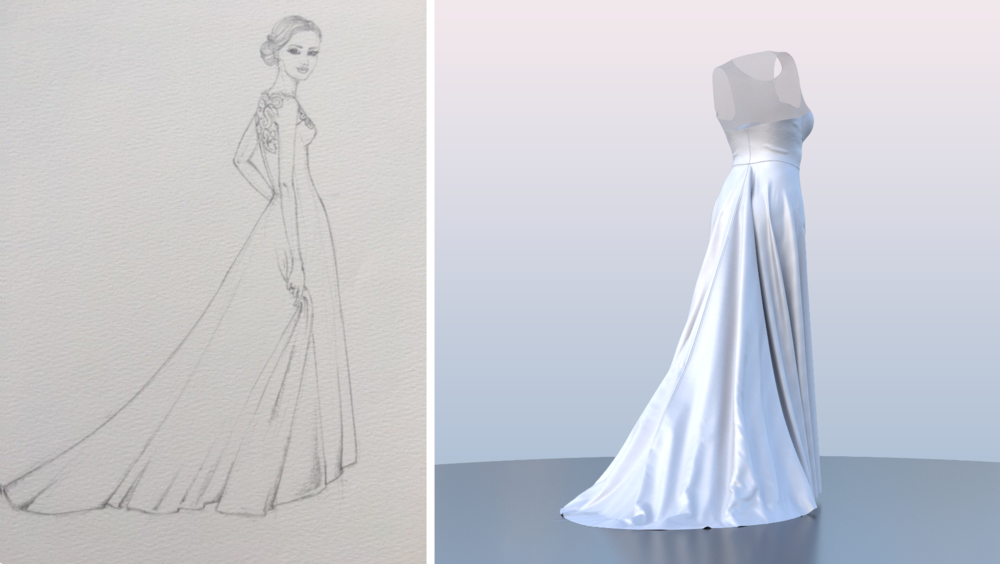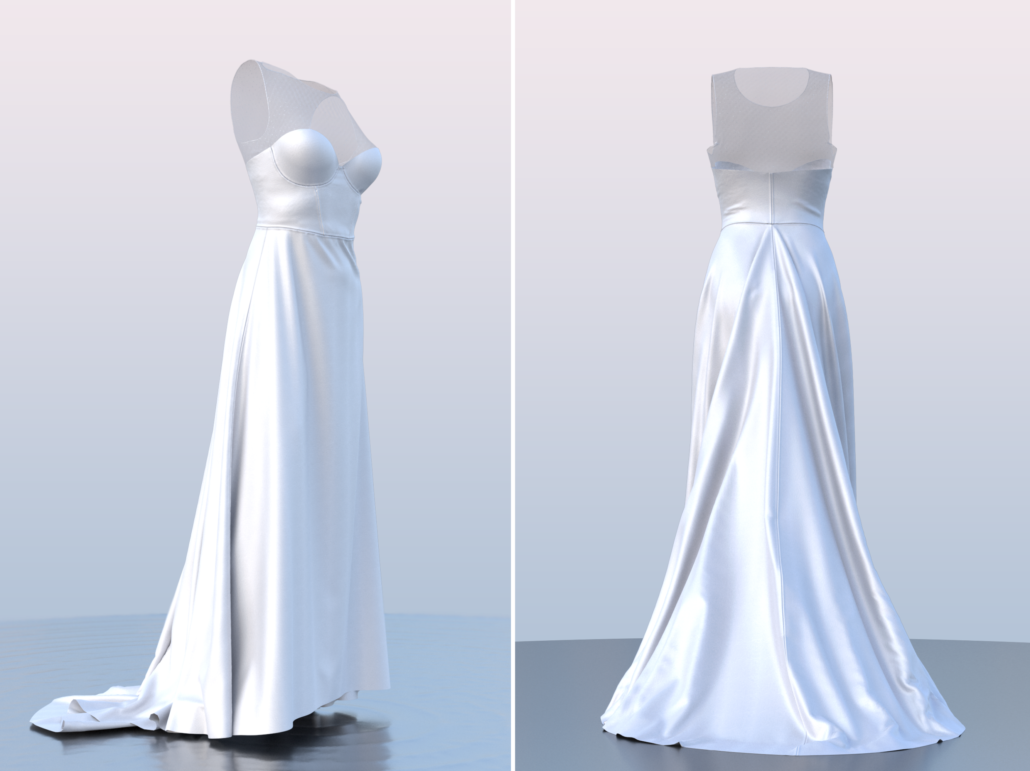How TekGurl Uses Browzwear to Help Brands Get Fit Right - Every Time
Discover how TekGurl uses Browzwear to streamline fashion development with precision, sustainability, and expert-led fashion product development...


Many of us know that the fashion industry has a huge impact on the environment, but most people are not aware of the role luxury fashion plays within this frequently talked about topic. The value of luxury fashion comes from its exclusivity and uniqueness, but what is the purpose if we produce an oversupply of clothing for each collection? When I began my career in fashion over 10 years ago, we worked on 2 collections a year. Slowly but gradually, this increased to 4 collections with a feeling of never having enough styles to offer.
It became a spiral vortex of demand and supply to present more and more designs per season. Who can keep up with this? Trying to repeatedly reinvent the wheel, and surely it defeats the purpose of creating something unique and special if it is being done over and over again? But it is not just the absurd amount of clothes that are being produced each year, more importantly, it’s the journey from sourcing the material to making the garment until it ends up in the stores for us to purchase.
As I am looking at brands that have already changed the way they work, I am asking myself, what does it take for luxury fashion brands to also make the transition? How can more brands work with ethical cuts (zero waste), sustainable sourcing, and producing? As the younger generation has become increasingly concerned about what is happening to our planet and the ever-increasing urgency to act now rather than later, so that our children have a future in our precious home, known as Earth – is a new approach needed by the luxury fashion industry?
Luxury fashion stands for well-sourced high-quality materials, remarkable design details, and exceptional workmanship for a perfect fit, but will this be enough to convince consumers to support their labels if they do not approach the topic of sustainability right now? Brands will have to rethink their strategy to bring back value into luxury fashion and how sustainability can become part of their brand identity.
We already have some pioneers in the industry, who ethically design, consciously source and treat materials and ensure sustainable manufacturing to reduce their carbon footprint. So far it has not been made easy for these few with a limited choice of materials, increased prices, and little financial benefit for being eco-friendly and sustainable, therefore it is up to every brand to make the extra effort and really create a difference.
Is there more that could be done to support these brands, to make sustainability more profitable and beneficial for these businesses that follow that path? No part of the supply chain can be excluded from making the change happen and it is also vital the consumer changes their mentality and culture.
As I am raising these questions, I’m also thinking of ways that the situation could be improved and how a digital product development process could help to make the change in an industry where traditional craftsmanship is one of the most important assets.
Designers already work in a much more three-dimensional workflow, with draping the fabrics on the stand and conducting life model fittings – creations come to life with movement and how the fabric is cut and drapes on the body. The design concept is established in the here and now with an incredible focus on detail.
However, with all the back and forth and a very lengthy design process, core pieces often get developed last minute to wow the audience on the catwalk. This is not just an exhausting process for all the people involved but it also puts immense pressure on the production team that needs to realize the creative output into a wearable garment after the show. Not to mention that the design intention can easily get lost in this process.
Wouldn’t it be the obvious step to take it digital and follow the same concept without wasting meters on meters of fabric, endless long nights of talented staff changing and creating countless toiles to materialize the vision of the designer? What is holding us back to start a different way of working?
It seems like we are afraid that perhaps technology will replace craftsmanship, making us hesitant in embracing it. Although, in my opinion, this will never be the case as the skill and knowledge of the craft no matter which industry, handed over from generation to generation will always be the embodiment of luxury value.
But would it not be incredible if we could merge these two concepts for a more sustainable approach to fashion in the future. As a trained made-to-measure tailor with many years in luxury fashion, I then made a conscious decision to move into 3D to be a part of shaping the future within the industry. I believe neither will be able to replace each other, but neither will be able to stand alone when it comes to saving the world we live in.
With a digital process, designs can be visualized in 3D and then allow the skilled and talented professionals with their expertise and experience in garment construction and workmanship, to bring these luxurious garments to life.
It does not need to stop there, with consumerism changing and factories being more flexible, there might not be any need to physically make a garment before it is sold in the future. This brings endless possibilities for unique and purposeful fashion designing that not just benefits the business by not wasting money on developing unwanted items and streamlining the whole process and therefore making it more efficient, but will also have a positive effect on our environment.
In the future, it will not be enough to craft beautiful clothes to be a market leader. Brands will need to implement a forward-thinking approach that starts now that incorporates all parts of the process and genuinely looks to make a positive change and impact the environment.
Because let’s face it, who needs clothes if we do not have a planet to live on?
Tra  ined in Austria as a traditional made-to-measure tailor in womenswear I made my way over to London in 2010 to work for fashion icon, Vivienne Westwood, as a creative pattern cutter. It was an amazing time working alongside Vivienne Westwood & Andreas Kronthaler, who taught me an incredible amount about draping, working with creative pattern systems, and ethical cuts & sustainability in fashion. I then moved on to working for brands like Mulberry & Victoria Beckham and did my fair share of freelancing for luxury brands. After 7 years in the UK, I got the opportunity to work for Lidl in Asia where I was first introduced to a 3D workflow & Browzwear. 4 years later and after working for Ralph & Russo in their Haute Couture & RTW department I decided to join Browzwear in Europe and to continue my journey in 3D.
ined in Austria as a traditional made-to-measure tailor in womenswear I made my way over to London in 2010 to work for fashion icon, Vivienne Westwood, as a creative pattern cutter. It was an amazing time working alongside Vivienne Westwood & Andreas Kronthaler, who taught me an incredible amount about draping, working with creative pattern systems, and ethical cuts & sustainability in fashion. I then moved on to working for brands like Mulberry & Victoria Beckham and did my fair share of freelancing for luxury brands. After 7 years in the UK, I got the opportunity to work for Lidl in Asia where I was first introduced to a 3D workflow & Browzwear. 4 years later and after working for Ralph & Russo in their Haute Couture & RTW department I decided to join Browzwear in Europe and to continue my journey in 3D.
Discover how TekGurl uses Browzwear to streamline fashion development with precision, sustainability, and expert-led fashion product development...
3D fashion software is essential to fashion supply chain, enhancing creativity, speed, and innovatio
Discover Browzwear’s new features that help fashion teams work faster, cut errors, and improve collaboration from design to production.